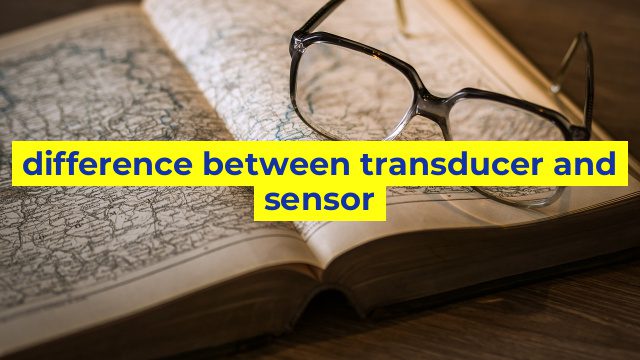Difference Between Transducer and Sensor – Understanding Their Role in Measuring Physical Quantities
When it comes to measuring physical quantities, transducers and sensors play a pivotal role. Oftentimes, these terms are used interchangeably, however, they are different from one another. A transducer is an apparatus that converts one form of energy into another. On the other hand, a sensor is a device that detects and measures changes in physical phenomena like temperature, pressure, or light.
Defining Transducers
A transducer, essentially, works as a converter of energy from one form to another. The device converts input energy into a change in the output signal. For instance, a microphone is a transducer that converts sound energy into electrical signals. Transducers can be electrical, optical, mechanical, or chemical in nature. They are highly adaptable and can convert energy between different types such as thermal to electrical, pressure to mechanical, or light to electrical signals.
Defining Sensors
Sensors are devices that detect and measure physical phenomena, like changes in temperature, pressure, or light. Sensors, unlike transducers, do not alter the input signal. Instead, they measure the physical quantity and convert it into an understandable form. Sensors can be mechanical, electrical, optical, or thermal in nature. Common examples of sensors include thermostats, pressure sensors, light sensors, and motion detectors.
The Key Differences
The key difference between transducers and sensors is that transducers convert one form of energy into another, while sensors detect and measure physical quantities. Transducers do not provide measurements themselves, but produce a signal that can be converted into a quantitative measurement by an analyzer. Sensors, on the other hand, directly provide the measurements.
Application Differences
Transducers find their application across various fields like medical devices, robotics, and automotive systems, to name a few. They can be used to sense temperature, pressure or flow rate, among other physical parameters, and convert them into electrical signals for further processing. Sensors find their use in a wide range of applications such as weather stations, laboratory equipment, smart homes, and more.
The Bottom Line
To sum it up, transducers convert one form of energy into another, while sensors detect and measure physical quantities. Both transducers and sensors are important for accurate, precise and reliable measurements in a variety of applications. Proper understanding and application of these devices can ensure safety, efficiency, and better performance in various industrial, consumer, medical, and scientific settings.
Table difference between transducer and sensor
| Transducer | Sensor |
|---|---|
| Transducer is a device that converts one form of energy to another. | Sensor is a device that detects and responds to some type of input from the physical environment. |
| Transducers can convert energy from mechanical, electrical, magnetic, or thermal sources. | Sensors are mainly used to detect physical properties like temperature, pressure, light, etc. |
| Transducers are used in a wide range of applications, including medical, automotive, aerospace, and industrial fields. | Sensors are commonly used in consumer electronics, industrial plants, and research facilities. |
| The output of a transducer is usually an electrical signal that can be easily interpreted by electronic devices. | The output of a sensor can be physical, like the dial on a thermostat, or electronic, like a signal sent to a computer. |
| Examples of transducers include microphones, speakers, accelerometers, and strain gauges. | Examples of sensors include temperature sensors, pressure sensors, light sensors, and proximity sensors. |

